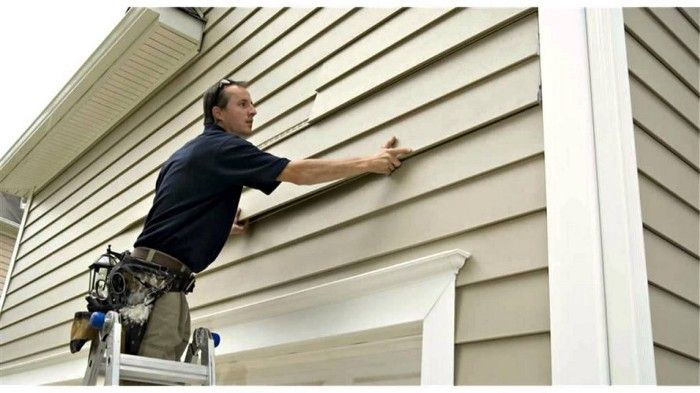White vinyl siding remains one of the most popular choices for homeowners looking to enhance their property’s curb appeal while maintaining durability and affordability. Its classic look, energy efficiency, and low-maintenance features make it a preferred option for both new construction and renovation projects. In this comprehensive guide, we will explore the benefits, installation process, maintenance tips, and considerations when choosing white vinyl siding for your home.
Benefits of White Vinyl Siding
1. Timeless Aesthetic Appeal
White is a versatile color that complements a wide range of architectural styles, from colonial to modern. Its neutral tone blends seamlessly with various landscaping designs and accent colors, providing homeowners with numerous customization options. Whether paired with bold trim or subtle details, white vinyl siding enhances the overall appearance of a home.
2. Cost-Effective Solution
Compared to other exterior materials like brick, wood, or fiber cement, white vinyl siding is a budget-friendly option. It offers long-term savings not only in material costs but also in installation and maintenance expenses.
3. Low Maintenance Requirements
Unlike wood siding that requires frequent painting, sealing, or staining, white vinyl siding is virtually maintenance-free. A simple wash with water and mild detergent helps keep it clean and looking new. Additionally, vinyl siding is resistant to pests, rot, and mold, which reduces the need for repairs and replacements.
4. Energy Efficiency and Insulation
White vinyl siding reflects sunlight, which helps keep the interior of a home cooler during hot summer months. Many vinyl siding options come with insulated backing that improves energy efficiency by reducing heat transfer, ultimately lowering utility bills.
5. Durability and Weather Resistance
Vinyl siding is designed to withstand harsh weather conditions, including heavy rain, strong winds, and extreme temperatures. Unlike wood, which is prone to warping or rotting, vinyl siding maintains its structural integrity over time. Additionally, modern vinyl siding products are treated to resist fading due to UV exposure.
Installation Process of White Vinyl Siding
1. Preparation
Before installing white vinyl siding, the surface must be properly prepared. This involves removing any old siding, repairing damaged walls, and ensuring that the surface is smooth and free from debris. A weather-resistant barrier may also be installed to enhance moisture protection.
2. Measuring and Cutting
Accurate measurements are essential for a seamless installation. Vinyl siding panels are cut to fit the dimensions of the walls, ensuring a precise and uniform appearance. Special tools, such as a circular saw or tin snips, are used for cutting.
3. Installing Starter Strips and Corner Posts
Starter strips are installed at the base of the wall to anchor the first row of siding. Corner posts are placed at the edges to provide a clean and professional finish. These components ensure proper alignment and stability of the siding panels.
4. Attaching the Siding Panels
Vinyl siding panels are installed from the bottom up, overlapping slightly to allow for expansion and contraction due to temperature changes. Nails are driven loosely through the slots in the panels to prevent warping or buckling.
5. Finishing Touches
Once the siding panels are installed, trim pieces, such as J-channels and fascia, are added around windows, doors, and rooflines to create a polished look. A final inspection ensures that all panels are secure and properly aligned.
Maintenance Tips for White Vinyl Siding
1. Regular Cleaning
To keep white vinyl siding looking its best, clean it at least once a year. Use a soft brush or a pressure washer on a low setting, along with a mixture of water and mild detergent. Avoid using harsh chemicals or abrasive tools that could damage the siding.
2. Inspect for Damage
Periodically check for cracks, loose panels, or signs of moisture buildup. Promptly repairing any issues helps extend the lifespan of the siding and prevents costly repairs.
3. Prevent Mold and Mildew
White vinyl siding can show dirt, mold, and mildew more visibly than darker colors. To prevent buildup, ensure proper drainage around your home, trim nearby trees and bushes, and use a mildew-resistant cleaner if necessary.
4. Avoid Excessive Heat Exposure
While vinyl siding is heat-resistant, prolonged exposure to high temperatures, such as from grills or fire pits placed too close, can cause warping. Maintain a safe distance between heat sources and your siding.
Considerations When Choosing White Vinyl Siding
1. Choosing the Right Style and Profile
White vinyl siding comes in various styles, including traditional lap, Dutch lap, board and batten, and shake. Each style offers a distinct look, so consider which design best complements your home’s architecture.
2. Selecting High-Quality Materials
Not all vinyl siding is created equal. Look for siding with UV protection, impact resistance, and a high-quality finish to ensure long-lasting performance.
3. Checking Warranty and Manufacturer Support
Many reputable manufacturers offer warranties on their vinyl siding products. Choose a brand that provides a solid warranty and good customer support for added peace of mind.
4. Considering Environmental Impact
For eco-conscious homeowners, some vinyl siding products are made from recycled materials and are recyclable at the end of their lifespan. Check with manufacturers to find sustainable options.
Conclusion
White vinyl siding is a smart investment for homeowners seeking a classic, cost-effective, and low-maintenance exterior solution. Its durability, energy efficiency, and aesthetic appeal make it a top choice for various architectural styles. By choosing high-quality materials, ensuring proper installation, and following simple maintenance practices, homeowners can enjoy the benefits of white vinyl siding for decades to come. Whether you’re building a new home or renovating an existing one, white vinyl siding provides timeless beauty and practical functionality.

